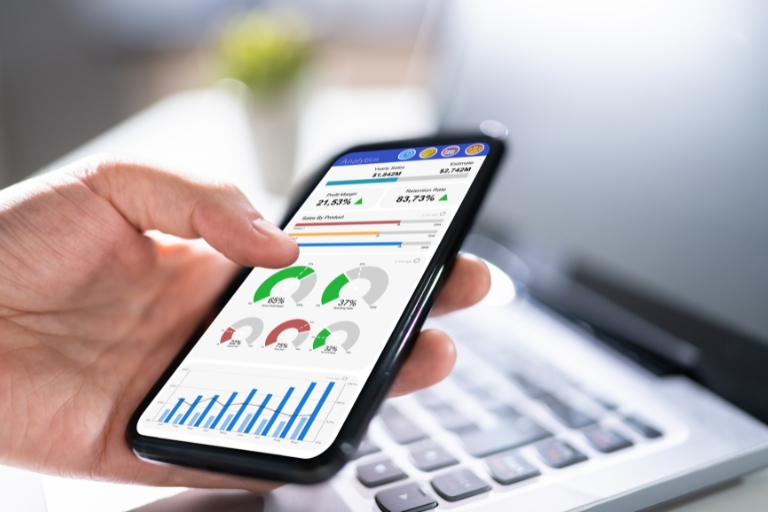Wearable Tech in 2025: The Future of Health and Fitness

Wearable technology has become increasingly ranching in the health and fitness space as we anticipate the year 2025. While it is used in its basic forms just as simple step counters, technologically advanced wearables can now keep tabs on heart rates, sleep, blood oxygen levels, and stress. Using wearable technology in sports started from mere gadgets that tracked steps, to technology that helps track patients’ progress and boost players’ scores.
How Serverless Architecture is Changing the Game for Web Developers in 2025

As more and more advanced technologies are introduced to the world, how developers design and implement applications is changing fairly quickly. Some of the most changing trends in recent years include the emergence of serverless architecture. Serverless architecture by then will have been adopted as a standard model of web application development owing to ease of use, affordability, and scalability. In today’s blog, we’ll tell you more about what serverless architecture means for web development, including its primary benefits, the most common use cases, and what the future might hold for the industry.
The Role of Nanotechnology in Building the Devices of Tomorrow

Nanotechnology is advancing at a very fast pace and has a major influence on the developmental processes and formation of future devices. Because nanotechnology deals with substances at molecular and atomic levels, it allows the engineering of superior systems and components that possess characteristics that traditional techniques cannot produce. Thus, the potential of applying nanotechnology covers electronics, energy, medical, and manufacturing industries, and can provide a new generation of innovative, effective, and powerful devices.
The Ultimate Guide to ORM: Tools and Software to Protect Your Online Image

Online reputation is everything. Whether you’re an individual, a business, or a brand, what people say about you online can have a profound impact on your credibility, trustworthiness, and success. This is where Online Reputation Management (ORM) comes into play. ORM refers to the process of monitoring, improving, and protecting your online presence, ensuring that the digital footprint you leave behind is positive, professional, and aligned with your values.
Google 5 Essential Tips for Detecting and Avoiding Online Scams

There is an increase in the level of sophistication as most scams are active across the internet to con citizens and companies alike. All sorts of techniques including but not limited to, fake emails, fake websites, and fake calls are continually being invented to deceive people out of their money or key privileges. Luckily, Google offers several rather useful tips on how audiences can identify when and how they have fallen prey to Internet scams. With these five crucial ideas, you can protect yourself and become more comfortable while working on the internet.
The Growing Role of Chatbots and Conversational UI in Web Development

Web development has emerged as a revolution in the past few years with new technologies that enhance the user experience and make business processes smoother. Chatbots and conversational UIs lead the revolution as they change the outlook of interactions between businesses and their customers online. While making customer service extraordinary, these innovations are changing the very web experience. We would now see the increasing use of chatbots and conversational UI in web development, the advantages behind their use, and how they can shape the future of online interactions.
How to Use Mobile App Analytics to Drive Business Growth

Mobile app analytics is no longer a luxury but a necessity for businesses that seek growth and remain competitive. It helps businesses improve user experiences, enhance app performance, and increase revenue based on data-driven, actionable strategies.
The Role of IoT in Smart Cities and Businesses

The IoT is revolutionising city dynamics and the operation of companies. It empowers people to achieve a better quality of life both for citizens and employees by providing connectivity of devices, sensors, and systems with the internet for real-time data collection, sharing, and data analysis to make smarter decisions and improve organisational efficiencies.
LinkedIn Analytics: How to Measure Your Impact and Engagement

LinkedIn has evolved significantly from a job board where job seekers posted their availability and recruiters searched. Today, it is a tremendous tool for personal branding, networking, and content marketing. More than 900 million users worldwide give LinkedIn an unmatched reach, increasing the strength of your professional presence. You must correctly measure your impact and engagement to leverage this platform’s potential.
Tech-Savvy Calm: 5-Minute Stress-Relief Techniques for Busy Professionals

In today’s high-paced work environment, stress has become an all-too-familiar companion. With constant emails, meetings, and deadlines, it’s easy to feel overwhelmed. But stress doesn’t have to take over your day. Even the busiest professionals can carve out five-minute windows to reset and recharge. Thanks to technology, managing stress is more accessible than ever. Here are five simple, tech-friendly tips to chill out within five minutes, to be composed, focused, and at the top of your game.


